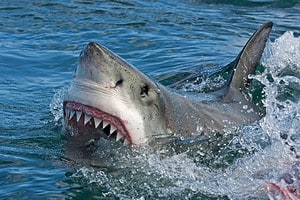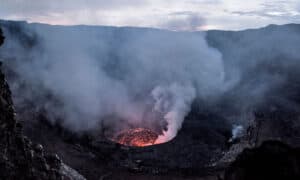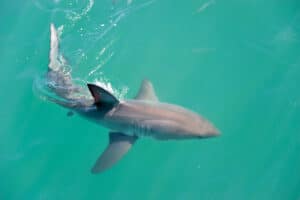Finding Nemo is a great story about friendship and bravery. It’s full of fishy characters, from tiny clownfish Nemo to powerful sharks, but did you know the types of sharks from Finding Nemo are real-life species? Let’s find out more about the sharks that inspired Bruce, Anchor, and Chum.
Bruce: Great White Shark (Carcharodon carcharias)
Bruce, the main shark character, is a shark species we all recognize — he’s a great white shark, scientifically known as Carcharodon carcharias.
Great White Shark: Appearance
Great white sharks are the largest predatory fish in the water. They can grow more than eight meters in length and weigh a massive 4,000 lbs (that’s two tons — the same weight as a Jeep Cherokee).
Finding Nemo’s Bruce looks like a great white shark! These massive sharks have a distinctive appearance, with torpedo-shaped bodies and pointed faces. They are usually gray to black on the top half and white beneath, which helps camouflage their enormous bodies.
Denticles cover a great white shark’s skin, which are bumps like tiny teeth that make their skin very tough. Crescent-shaped tails are powerful enough to propel them forward at 35 mph. They have large side fins that prevent them from sinking. The dorsal fin that heralds a great white’s arrival in movies aids balance and steers through choppy surface water.
Bruce has an array of large pointed teeth, which great white sharks actually have. Their jaws hold 300 serrated, 6 cm long triangular teeth, and, amazingly, they are replaced throughout their lifespan.
Did you know that great white sharks need to move; otherwise, they drown? Seawater is forced across their gills to replenish oxygen. If they can’t swim, they die!
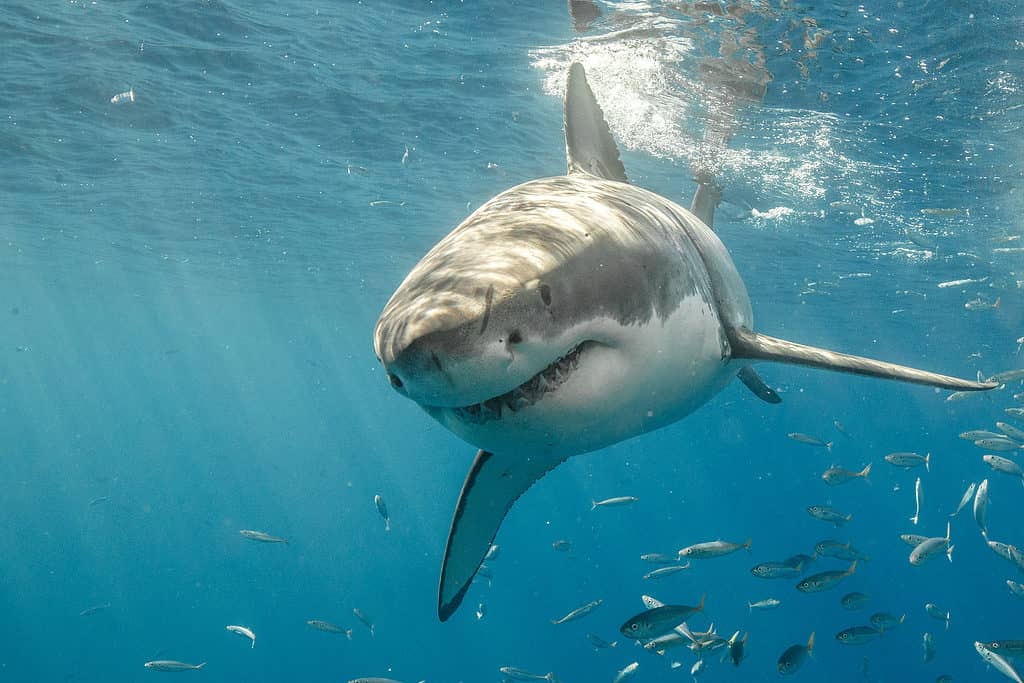
The main shark character in Finding Nemo is Bruce, a great white shark, the largest predatory fish in the waters today.
©iStock.com/ShaneMyersPhoto
Diet
In Finding Nemo, Bruce is a struggling vegetarian, but this would not happen in real life. Great whites are predatory carnivorous fish that hunt and kill their food. Their prime targets are sea lions, seals, dolphins, porpoises, and small whales. They will also scavenge carcasses on the sea floor.
These incredible sharks can sniff out blood from one-third of a mile away and detect electromagnetic vibrations in the ocean through their lateral lines, which are special rib-like organs on their sides. These techniques help them locate prey because their eyesight is poor.
Habitat
Great white sharks inhabit tropical and temperate water around the world. They are most commonly found in South Africa, Australia, the North East United States, the Seychelles, and Hawaii. This terrifying shark travels hundreds of miles in open water following prey migrations.
Endangered Status
The IUCN lists great white sharks as Vulnerable. Few predators hunt great whites, but orcas are an exception. Great white sharks’ main predators are humans, who hunt them for sport trophies. Beach nets that protect surfers and tuna fishing nets also snag great whites.
How Many People Have Great White Sharks Killed?
Great whites are probably the sharks most people know about due to their fearsome reputation.
According to the International Shark Attack File, great whites are responsible for the most significant number of unprovoked attacks on humans. Since 1958, they have attacked 351 humans, and 59 of these unprovoked attacks were fatal.
This may sound like a lot, but it is less than bee stings that kill over 60 people a year in the US alone.
Anchor: Hammerhead Shark (Sphyrnidae)
Dolphin-hating Anchor is self-conscious about his head shape, which clearly marks him as a hammerhead shark!
Hammerhead Shark: Appearance
Hammerheads are best known for their unusually shaped long and rectangular heads that resemble a hammer. Their scientific name is Sphyrnidae, which is actually Greek for hammer!
Experts think their heads evolved to enhance vision and, therefore, hunting abilities. Hammerheads can see 360 degrees at any one moment.
They have gray-green olive bodies with white bellies for camouflage and quite small mouths that contain tiny serrated teeth. There are nine true species of hammerhead sharks, and they range from 0.9 meters to over 6 meters in length. The smallest species is the bonnethead (Sphyrna tiburo), and the largest species is the great hammerhead (Sphyrna mokarran).
If Finding Nemo’s Anchor were a little more elongated, he would resemble a true hammerhead shark.
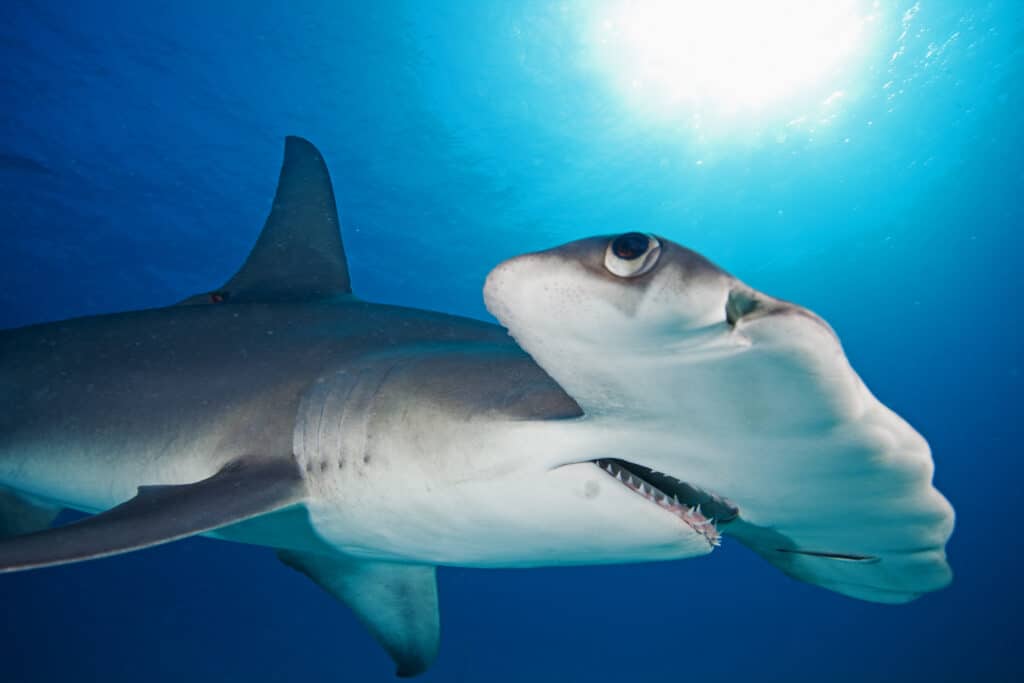
‘s Anchor is a hammerhead shark best known for its rectangular head that resembles a hammer.
©Martin Prochazkacz/Shutterstock.com
Diet
Hammerhead sharks are carnivores that eat fish, crustaceans, and squid, but their favorite prey are rays.
Using their unusual heads, hammerhead sharks can find sand-buried rays on the ocean floor. Rays are powerful fish, but hammerheads are able to pin them down with their heavy heads. Anchor had nothing to be embarrassed about because his distinctive head shape was a real asset.
Habitat
Unique hammerhead sharks inhabit warm oceanic waters. Their most common habitats are Hawaii, Costa Rica, and Southern Africa’s coastlines and continental plates. They migrate to the equator during winter and the Poles in the summertime.
Are Hammerhead Sharks Endangered?
Hammerhead shark numbers are in decline. Endangered subspecies include the largest species of all, the great hammerhead, which is an IUCN Red List critically endangered species. Experts think as much as 80% of the population has disappeared since the year 2000.
How Many People Have Hammerhead Sharks Killed?
Hammerheads do not prey on mammals, and there are very few recorded attacks. Records state there are just 18 unprovoked attacks and no fatalities.
Chum: Mako (Isurus)
Chum is the hyperactive, mean-looking type of shark from Finding Nemo and he’s a mako.
Mako sharks are known for their high-speed attacks. They are the fastest sharks in the world, regularly reaching speeds of 45 mph.
Mako Shark: Appearance
Makos are mackerel sharks that reach impressive lengths. Males grow to about nine feet, and females up to 14 feet. They are powerfully streamlined fish with pointed faces and muscular tails that enable them to kill some of the fastest fish in the world. They have small pointed teeth to help hold onto rapidly-moving slippery fish and one of the most powerful bite forces of all the shark family.
There are two species of mako shark. The most common is the shortfin mako (Isurus oxyrinchus), and the rarer longfin mako (Isurus paucus).
Like Bruce and Anchor, Chum is colored correctly in Finding Nemo. Mako sharks have dark blue or gray backs and white bellies for camouflage, and Chum’s hyperactive nature fits with a mako’s extreme 45mph prey striking speed.
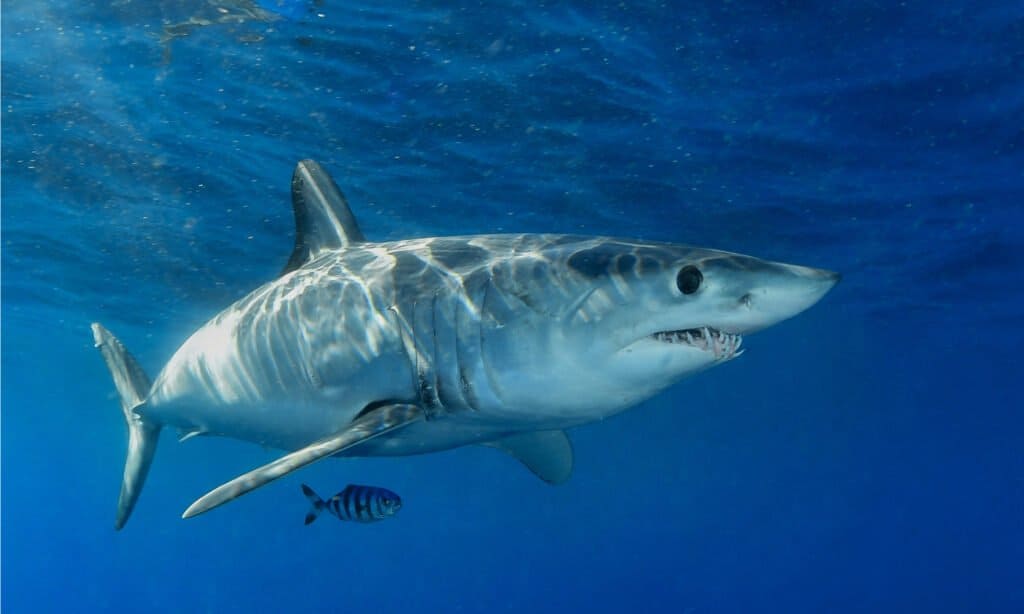
The character Chum in
Finding Nemois a mako shark known for its high-speed attacks.
©Xavier ELIAS Photography/Shutterstock.com
Diet
A mako’s diet consists of fish such as mackerel, tuna, herring, bonito, and swordfish, plus squid, octopus, seabirds, turtles, and other sharks. They are carnivores with large appetites. Shortfin mako sharks eat 3% of their weight each day, so they are always looking for food. Mako sharks are more visual than other species, and they have one of the largest brain-to-body ratios of studied sharks.
Divers have noted that just before a mako shark attacks its prey, it swims in a figure of eight with a wide open mouth.
Habitat
Shortfin makos inhabit most of the planet’s temperate and tropical waters, including South Africa, Hawaii, California, and Japan. Longfins inhabit the warm Gulf Stream.
Mako sharks are always on the move, migrating from vast open oceans to the coast and around islands.
Endangered Status
Shortfin mako and longfin mako were assessed by the IUCN in 2018 and classed as Endangered. They are slow to reproduce, but another problem is humans. Humans catch mako sharks for food and sport and pollute their ocean habitats, so they breed in fewer numbers.
How Many People Have Mako Sharks Killed?
Since records began in 1958, unprovoked shortfin mako sharks have attacked ten humans, and one of the attacks was fatal. There are no fatality records for longfin makos.
Mako sharks are considered big game fish, so they are hunted by anglers. When mako sharks are landed, they can cause considerable injury to anglers and the boat.
Would Nemo Sharks Live Together in Real Life?
Bruce, Anchor, and Chum are friends in Finding Nemo, but in real life, sharks are solitary carnivorous fish. They do not live in family groups or with other sharks.
Great whites have been spotted sharing whale carcasses, the smaller sharks giving way to the larger ones, but they don’t stay in a school.
Can the Types of Sharks from “Finding Nemo” Be Vegetarian?
Bruce’s slogan ‘fish are friends, not food’ does not apply in the real shark world. All sharks hunt and eat meat ranging from fish to shellfish, from mammals like seals to seabirds.
However, there is one small hammerhead shark species called the bonnethead (Sphyrna tiburo) that’s an omnivore!
This shark inhabits warm waters around the United States and consumes large amounts of seagrass. In the past, experts thought they ate seagrass accidentally, but recent research indicates they can digest it. In one study, 62% of a bonnethead shark’s stomach contents were seagrass.
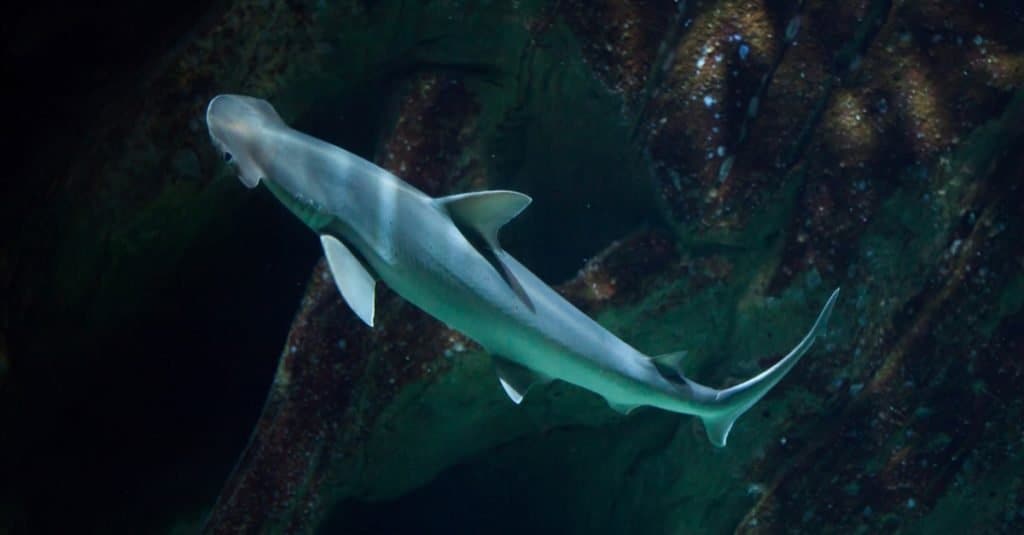
While no shark is vegetarian, like in
Finding Nemo, the
bonnethead shark
comes close to eating both plants and meat.
©Vladimir Wrangel/Shutterstock.com
What Animal Species Are in “Finding Nemo”?
Finding Nemo depicts real-life animal species, including:
- Nemo and Marlin: Clownfish
- Dory: Yellow tail blue tang
- Mr Ray: Spotted eagle ray
- Crush and Squirt: Green sea turtles
- Tad: Yellow longnose butterflyfish
- Pearl: Flapjack octopus
- Nigel: Australian pelican
Sharks Types in “Finding Nemo”
The types of sharks depicted in Finding Nemo are cleverly animated to resemble real-life sharks closely. The leader is Bruce, a great white; Anchor, a hammerhead; and Chum, a mako. However, in real life, Finding Nemo’s sharks would not be friendly or vegetarian, and they would not live in a group!
The photo featured at the top of this post is © Digital Storm/Shutterstock.com
Thank you for reading! Have some feedback for us? Contact the AZ Animals editorial team.



